Feeding
Ruminant digestion
Cattle are grazing animals that spend most of their day eating, ruminating and searching for food. Their preferred diet consists of grass, but they also consume other plant materials such as leaves, stems, and bark. Grass and all high roughage feedstuff like hay consist of cellulose, a substance that humans cannot digest. The digestive system of ruminants (which includes cattle, goats, and sheep, and also many wild animals) is designed to digest cellulose and thus grass and leaves, hay or grass silage. They have millions of tiny microorganisms (bacteria and others) in their stomachs that help digest cellulose and provide energy to the animal. All ruminants ‘chew their cud’ which means they return the food from their stomach back to their mouth for a second thorough chewing, usually about 60 times each mouthful, before it is swallowed again.
Let’s have a closer look at the different steps in ruminant digestion:
- Feed intake: If a cow has a choice, she spreads her feed intake over the day in about 10 to 15 feeding sessions of about 30 minutes each. If cattle are fed by humans, they can be fed twice a day so that they have enough time for ruminating between the feeding phases.
- Rumen: After the feed is swallowed, it travels down a tube called the oesophagus and goes into the rumen, the first of four chambers of a ruminant ‘stomach‘. The rumen contains an extremely large number of small organisms (bacteria) that break down the feed. The rumen is also constantly moving and mixing the food pulp. These movements can be heard in a healthy cow about 3 times per 2 minutes.
- Rumination/”chewing the cud”: The cow spends several hours a day ruminating. After the feed ball has landed in the rumen, the cow brings it back into its mouth several times and chews it again. This breaks it down further, which makes it better digestible for the bacteria in the rumen. Saliva is also produced while chewing and swallowed again, which helps to prevent over-acidification in the rumen. Ruminating is an important part of a healthy digestion!
Feeding the bacteria, not the cow
The bacteria in cattle's stomachs are extremely important for their health and productivity. There are many different bacteria and they should be balanced. Different feedstuff is digested by different bacteria. With the choice of feed the composition of bacteria can be influenced. A cow can become ill if “bad” bacteria become too many and “good” bacteria are underrepresented.
4. Reticulum: After the feed is chewed several times during the process of rumination and brought back to the rumen, smaller particles pass through the second chamber of the stomach called the reticulum. The reticulum is a kind of filter that separates large and small components. The large feed components cannot pass through this filter and remain in the rumen for further processing during chewing and rumination.
5. Omasum: Smaller particles that have passed through the reticulum then arrive in the omasum, the third chamber of the ruminant stomach, where water is extracted from the feed pulp.
6. Abomasum: Finally, foodstuff arrives in the abomasum, the fourth chamber of the ruminant stomach. This chamber most closely resembles the stomach of humans. Here, the food is digested with enzymes and gastric juice.
7. Small intestine: After the food leaves the abomasum, it arrives in the small intestine. The small intestine has a special lining through which nutrients are absorbed into the bloodstream. These nutrients are then distributed throughout the cow's body to support functions such as growth or milk production.
8. Large intestine: After the nutrients have been removed, the rest of the material reaches the large intestine. The large intestine has a special lining mainly designed to extract the remaining water from the remains of the food that the cow cannot digest.
9. Anus: After the water has been removed, the remaining material passes through the rectum and out of the anus as faeces.
Calf digestive system
The digestive system of cattle develops over time. A young calf does not have a functioning rumen, reticulum or omasum and is therefore not able to digest the same feed as mature cattle. In the first months of life, the calf primarily drinks the milk of the mother cow. The milk flows directly from the mouth through a tube-like structure (esophageal groove) into the abomasum. If the calf drinks rapidly, some may overflow into the rumen because the oesophageal groove reflex fails, and the milk flows directly into the rumen instead of the abomasum. The rumen, reticulum and omasum start to slowly develop as soon as the calf starts to eat forage (this is already during the first days of life). This is why calves should always have access to forage so that a healthy population of bacteria can start to develop from early stages. This will result in a normal functioning rumen when the calf is about three to four months old.
Organic feeding principles
- Organic farmers aim to produce most of the animal feed they will need on their farms. Therefore, the number and type of animals must be adapted to the water available, as well as the field surface for grazing and fodder production on the farm.
- If concentrated feed (e.g. feed containing a high proportion of grains) is bought, it cannot contain growth promoters and hormones as feed supplements.
- Cattle feeding is based on roughage, but can be supplemented by small amounts of concentrates such as grains.
- Preserving and storing fodder as hay, silage, straw or dried leaves from feed-bushes helps avoid or minimise costs for external feed, and ensures appropriate feeding also during dry seasons.
- Purchased feed should come from organic farming.
- The portion of concentrates in the ration is strictly limited, as such feeds are not natural to ruminants. The rumen of ruminants is made for roughage and not for concentrates. Moreover, concentrated feeds are expensive, compete with human nutrition, and are not constantly available (in organic quality).
- Fodder for ruminants can be produced from grass or leguminous plants that are grown as cover crops or on soil erosion control bands, from hedges, shrubs and shade and support trees. Crop residues are an additional source of fodder. But the most natural and efficient way to feed ruminants is by grazing.
- Not every breed of cattle is equally suitable for roughage-based feeding. Breeds that are genetically designed for high and quick growth or high milk yield (e.g. Friesians, Limousin) demand a diet rich in energy and protein. With a roughage-based ration, this can be challenging because the density of nutrients is generally lower than if you feed a lot of concentrates. And if these breeds are not fed according to their needs they become prone to diseases. Learn more about how to choose the right breed and animals in the chapter breeding.
Feeding strategies
There is no “one size fits all” feeding strategy in organic livestock farming. Having the above-mentioned feeding principles in mind, cattle can be fed on different plants and feeds, by grazing or by serving prepared fodder. The diet and the feeding strategy depend on a number of factors, such as size and quality of grazing land, climate, mechanization, fodder production, storage infrastructure and others. In the following table, different feeding strategies for cattle are presented.
It should be noted that these can be interpreted very differently depending on the local conditions. For example, "grazing" in a place with regular rainfall, good soil and a large land parcel could mean that cattle are grazed on fenced, improved pastures (see planned grazing). Whereas “grazing” on a farm with not much own land, little vegetation and 1-3 cows can be interpreted as leading cattle to roam freely on grass patches along roads or between fields.
Nutritional requirements of cattle
Why cattle should have a grass/roughage-based diet: Ruminants evolved over time to survive and thrive solely on grasses, bushes and trees (leaves, twigs, etc.). These feeds contain a large proportion of crude fiber, which is only well digestible by ruminants. Any other feed (e.g. grains, oils, etc.) must be considered carefully and introduced slowly to avoid upsetting the delicate balance in the rumen. In organic cattle husbandry, their use is limited.
Good nutrition – good health – good production: Feeding plays a key role for cattle health and performance. Cattle need the right amount of nutrients for the maintenance of basic body functions (e.g. sweating, digestion, immune system), for production (e.g. milk synthesis), for their own growth and for the growth of an embryo.
Consequences of inappropriate feeding: In case of nutrient deficiency due to inappropriate nutrition, cattle will not be able to perform to their potential. Also, their immune system will be weakened, making them more prone to illness and diseases. Ensuring an appropriate diet that meets the nutritional needs of the animals will pay off with good health and performance.
Nutrient categories: The nutrients needed can be divided into four main categories: 1. fibre; 2. energy, 3. protein, 4. vitamins and minerals and trace elements as well as water. All feed sources contain a mixture of some or all of these components. The challenge is to choose feeds that have enough of all four categories, complemented by the necessary amount of water.
Fiber, energy and protein
Fiber
Crude fiber is composed of cellulose, lignin and hemicellulose. Crude fiber is broken down by the microorganisms in the rumen into products (fatty acids containing energy), that ruminants can use for their own growth and production. So, although crude fiber isn't directly counted as an energy nutrient, its products do contribute to the energy available to the animal. Cattle feed must contain enough crude fiber to maintain rumen function concerning microbial life and rumen movements. In general, the fiber content increases with the age of the plant, whereas the protein content decreases.
Energy
Animals, like humans, need enough energy to survive and thrive. Energy in cattle nutrition originates mainly from carbohydrates and fats.
Carbohydrates are the main energy source in a cattle diet. The three major types of carbohydrates are crude fibre, sugars, and starch. The digestive system of cattle is not designed for large amounts of sugar or starch. In exceptional cases, feed components with a comparatively high proportion of starch or sugar may also be part of the ration (e.g. extreme shortage of grasses and roughage during periods of drought). These are written here in brackets, as they are expressly not suitable for ruminant nutrition, are not efficient and would often be better utilised in human nutrition.
- Feeds with high crude fiber content: grasses, hay, straw
- Feeds with high sugar content: (molasses, sugar beets, sugar cane, maize cobs)
- Feeds with high starch content: (potatoes, cereal grains)
Fats have a high density of energy. However, the digestive system of cattle is not made to digest fats well. If fats are fed in big amounts to cattle, it can have negative impacts on the digestive system of the animals. In addition, feedstuffs with high fat contents are often expensive.
- Feeds with high fat content: (oils or meal from oilseeds, e.g. cottonseed, sunflower seeds)
- Energy in feeds is measured in “mega joules” (MJ).
- The energy requirement of cattle is expressed in “ME (MJ)” which means “metabolisable energy in mega joules”.
- The cow needs metabolisable energy for maintenance, liveweight gain, milk production and pregnancy.
- The energy requirements per day are calculated based on the following equation:
The energy requirement is higher when …
- the cow produces milk.
- a calf/heifer is gaining liveweight.
- a fattening beef animal is gaining liveweight.
- an animal is ill/fighting a disease.
- cattle move long distances or/and on steep hills.
- cattle are used for fieldwork (e.g. as draught animals/oxen).
- a cow is pregnant.
Proteins
- Proteins are made up of different combinations of 20 amino acids.
- Amino acids are used by the animal to support body functions such as growth, reproduction, and milk production.
- Animals can produce some of these amino acids themselves in their bodies, while others have to be supplied in the food they eat.
- Humans, pigs or even poultry have to get most types of amino acids from their food, but it is a little different with ruminants: the microorganisms in the rumen can produce all of the amino acids by themselves that the animal needs.
- The microbes need nitrogen (either from amino acids or urea*) and energy to produce the right type and amount of amino acids for the animal. *Note: According to organic standards, the feeding of artificial urea is generally not permitted.
- When the microbes die off, their body proteins (and so the amino acids) also become available to the ruminant.
- This microbial protein represents the majority of the protein usable by the ruminant (about 60 to 80%), while only a small part (40 to 20%) is supplied directly through the feed.
- In ruminant feeding, the aim is therefore to ensure that the microbes can grow well in the rumen and produce the microbial protein for the animal. (see section Feeding the bacteria, not the cow).
Protein unit
The total protein content in livestock feed is expressed in “crude protein”.
Protein-rich feed
Legume forages, e.g. alfalfa, clover, Desmodium or Sunhemp/Crotalaria, are examples of protein-rich forages. Incorporating legumes into grass pastures can significantly increase the protein content of the forage. However, it must be mentioned that it is often difficult to find legumes that grow well under local conditions and there can also be difficulty in finding seeds.
In non-organic farming, commonly used sources of protein are oilseed cakes/meals derived from soybean, groundnut, sunflower or cottonseed. While they are protein-rich, the downsides are that most of these feedstuffs must be purchased, are hard to find in organic quality and are not a natural cattle feed. Similarly, other protein sources such as fish meal and palm kernel cake should only be fed to cattle in small amounts.
Dry matter, energy and protein content in different forages and feeds
The dry matter content, crude fibre content, energy content (MJ ME/kg DM), and crude protein content of forage grasses can vary depending on several factors, including the specific grass variety, growth stage, environmental conditions, including management practices. Here are approximate ranges for the dry matter content, energy content, and crude protein content of the forage grasses commonly cultivated in Sub-Saharan Africa:
1The dry matter is the part of the plant material that remains after deducting the total water content (completely dried). Since water contains no energy and no protein, the total energy and protein content is part of the dry matter.
Minerals, vitamins and trace elements
Minerals and trace elements
Minerals such as calcium, phosphorous, and salt make up a small, but vital part of a cow’s diet. Minerals enable critical reactions in the body. Here some examples:
- Calcium and phosphorous are essential for the formation of strong bones and good milk production.
- Calcium is important for the contraction of muscles.
- Sodium and Chlorine (in salt) are important for heat regulation.
- Magnesium is important for the relaxation of muscles.
- Selenium is important for the immune system.
If these minerals are unbalanced or are not sufficient, the animal may become ill, unable to produce, or have problems in pregnancy or birth. For some minerals and trace elements there are local differences in natural supply depending on the availability in the soil and in the plants. Minerals and elements lacking in a certain region have to be known in orderto provide the necessary amounts. Please see the animal health section for more information on mineral deficiencies.
Vitamins
Like minerals, vitamins play crucial roles in various physiological processes in cattle. Here some examples:
- Vitamin A: Important for vision, growth and immune function
- Vitamin D: Involved in the calcium and phosphorus metabolism.
- Vitamin E: Supports the immune system
- Vitamin K: Involved in wound healing
- Vitamin B: Involved in production of protein in the rumen
- Vitamin C: Supports the immune system. Is produced in the body of the cattle.
Mineral and vitamin supplements
- In most cases, the minerals and vitamins coming from fodder are not enough for cattle.
- Depending on the soil, the management of fodder cultivation, storage and type of feed, different minerals and vitamins must be supplied.
- What is almost always insufficiently covered by grass from the pasture and feedstuff is the salt requirement.
- Therefore, a salt stone or regular salt doses must not be missing! Salt is an inexpensive input and should be made available to all cattle.
- Minerals can be fed additionally as mineral feed or they can also be injected. For example, calves are sometimes injected with iron and selenium. These measures have to be decided according to the location, the feed and the animals. Consult an advisor or a veterinarian.
Water
Clean water is essential for healthy cattle. Similar to feeding requirements, cattle have a general baseline for water consumption, and needs may increase from this baseline given certain circumstances, depending on age, production, weather, and breed. For example, on hot days water consumption will increase, and animals that are growing, pregnant, lactating, or who are being used for heavy work as oxen will need up to twice as much as the baseline to be properly hydrated. Animals that require the most water are lactating cows, who require up to twice the amount of that of dry cows. Cattle require 15 to 80 liters water per day, at the rate of 4 liters per 45 kg body weight during wet season and 7,5 liter water per day during hot weather.
Water troughs should be frequently cleaned for animal health and welfare. It is often not possible to provide the animals with water throughout the day and they are taken to a water source. It is recommended to take the animals to a water source at least twice a day. Too few watering opportunities could have a negative impact on production levels (milk yield, growth), health and fertility. During dry seasons, feed and water can be so scarce that animals do not have enough to eat and drink. Local breeds are generally better adapted to extreme weather conditions and can cope better with food and water shortages.
Factors influencing nutrient requirements
The need of nutrients is influenced by various factors, such as the breed of the cattle, body condition, level of lactation, pregnancy, age, heat stress, movement, growth, or diseases. Only livestock fed according to nutrient requirements will achieve optimal milk production or growth and health. Nevertheless, cows can also survive times of shortage well if they are not too long and not too severe. Then the cow first reduces her performance (e.g. milk yield) or mobilises body resources in order to stay healthy.
Ration formulation and control
Ration calculation is a method of calculating the types and amounts of feeds that should be provided to an animal to cover its nutritional requirements. Besides that, it can help to detect mistakes in feeding which often contribute to low production, bad fertility or health problems. There are basically two ways to find out whether a feed ration meets the nutritional needs of the cattle, optimally both are combined:
- Ration formulation: Calculate the nutrient needs of the cow and compose the ration. As these calculations are complex, it is recommended to do this with a computer program. This is mostly done by extensionists or feeding consultants.
- Ration control: Check continuously if the animal shows signs of an inappropriate ration. If possible, adjust the ration as soon as signs appear. This should be done by every farmer on a daily basis.
Of course, both methods can be combined, daily animal control should always check for signs of inappropriate feeding.
Ration formulation
How does it work?
- The cow’s requirements depend on the live weight, breed, the pregnancy stage, milk yield, body condition, age and lactation stage.
- Ration formulation includes all these factors and calculates the exact nutrient requirement of dairy or beef cattle.
- The nutrient contents of the available feedstuffs (roughage) are either entered by the user or come from standard data.
- The program then calculates how much of which feed should be fed every day to every animal and if additional feed supplements are necessary or not.
- Ration formulation is a complex process and it is rather done by extension staff than by farmers and mainly for high yielding animals.
Ration formulation tools
Many ration formulation tools have been developed by various organisations to help with this process. One tool was produced by the FAO: https://www.feedipedia.org/content/fao-ration-formulation-tool-dairy-cows
Note: Most ration calculation programs propose to balance nutrient imbalances with bought feedstuffs (concentrates). The suggested amount of concentrates in a ration can get very high then. This doesn’t fit well with organic standards and needs to be kept in mind when using such programs. In organic farming, it is always the approach to feed animals on roughage from the farm/region. Although nutrient gaps can result of this feeding strategy, most animals can cope well with that. In case of nutrient gaps, they either increase feed intake or use their body reserves or reduce production, or they combine these coping strategies. Only high-yielding animals get serious problems because of nutrient gaps. For them, it is more important to get the calculated feed composition.
Dry matter (DM) intake per day
As a rule of thumb, a dairy cow should eat 3% DM of her body weight per day. For beef cattle, this is a bit lower, around 1.5 - 2% DM.
Example: A cow which weights 300 kg should eat 9 kg DM per day. If the ration contains mainly hay, which has 85 to 95 % DM per kg hay, the cow should eat about 10 kg hay per day.
Ration control
A farmer can check daily whether the ration is well adapted to the cow's needs or whether there is a deficiency or surplus of energy, protein, water, minerals or vitamins:
- Milk yield: The amount of milk from each cow should be noted at each milking. This way, abnormalities can be detected quickly. If the milk quantity suddenly drops or stays low over a long time, this may indicate a feeding error (too little energy, protein, minerals or water) or a health problem.
- Life weight estimation: There are different ways a farmer can estimate the live weight of cattle:
- App: The calculation of the body weight can be done with an app. Recommended is the app called “eWeigh”, developed by ILRI (International Livestock Research Institute). The body weight is calculated by the app based on the entered heart girth (cm).
- Weight measuring band/tape: There are special tapes that allow you to measure the chest circumference and then directly give you an estimate of the weight. It should be mentioned that both measurements may have different accuracy in different breeds.
- Body Condition Score (BCS): To estimate the BCS of a cow you visually inspect different body parts of the cow and score them. In the end you have a score that gives you an estimation of the cow’s energy reserves. Learn how the BCS method is applied (see illustration). Indigenous breeds usually cope better with high body condition ranges than high yielding commercial breeds.
- Rumen fill score: the “hunger groove” is a sign for the fullness of the rumen and shows how much a cow has eaten over the last 6 hours. If the hunger groove is sunken one hand deep in the shape of a triangle, it is a sign that the animal is not eating enough. If this occurs in several animals in the herd over a long time, the ration must be checked. If it only occurs in single animals this can be a sign of a medical problem (disease, stress, claw problem or lameness).
- Rumen contractions: The muscles of the rumen contract regularly, which mixes the contents and transports them further in the digestive system. In a healthy cow, this contraction occurs at least 3 times per 2 minutes. The contraction can be heard on the left flank of the cow with a stethoscope. The sound is wave-like. Experienced persons can also feel the contraction with their hand in the hunger groove (see illustration). If the noises occur less frequently than 3x/2 min, this can be an indication of a rumen disorder. The reason for a rumen disorder can be the feeding of too much finely ground feed or too little fiber content or too much starch- or sugar containing feed. It will all lead to an acid rumen because of too little saliva production (too little chewing the cud) and/or too many acids built during digestion.
- Observing and counting rumination: You count how often a cow chews the cud per rumination. A cow chews the cud at least 55 times before swallowing again. Below 40 times is too low (not enough fiber content), above 70 times is too high (too much fiber content).
- Examination of cow dung: If the cow dung is rather liquid and the cow patty is not round, this may indicate too little crude fiber, high water content in the fresh feed or too much protein. If the cow dung is rather dry and the cow patty is high, this may indicate a surplus of crude fiber, a lack of protein or a lack of water in the ration.
- Content of fat and protein in the milk: If the content of fat and protein in the milk is known, this information helps to assess the diet of the cow. If the fat content is unusually high, this can be a sign that the crude fiber content in the ration is too high.
- Growth rate: A farm with fattening cattle should keep records about the growth performance of its cattle. The animals can be weighed or measured quarterly and the daily growth or weight gain can be calculated on the basis of these measurements.
Feeding a dairy cow
Feeding management
The goal of feeding a dairy cow from an animal management perspective is to keep the cow productive and healthy. As we know, a cow’s digestive system is based on microbes in the rumen. Feeding management aims at promoting the growth of the good microbes in the rumen, which is supported by:
- Know the cow’s feeding behaviour and notice, if the cow shows signs of discomfort.
- Feed the cows in a place where every animal is undisturbed and not stressed by other animals, noise or heat.
- Watch the young cows well, so they can eat enough without being disturbed by others.
- Energy and protein balanced feed rations according to the cow’s requirements.
- A ration rich in crude fiber promotes rumination and rumination is important for a healthy digestive system.
- Do not cut or grind the feed too much. Chewing is stimulated by good structure in the fodder and is healthy.
- No abrupt feed changes. Give the cow (and the microbes) time to get familiar to new feedstuff (change feed step by step, if possible, mixing new feed and old feed and increasing the amount of new feed over several days).
- Give time and places for rumination. If cows are in a stable, feed them twice in the morning and twice in the evening. So, they have enough time to chew the cud during the day and the night. There should be enough room /surface so they can all lie down and ruminate together. They should be able to lie down and get up easily. If you see many cows in a herd doing different things at the same time, you know that the barn is not built in a way that animals all have enough space, to all do the same, which would probably be applicable.
- Provide fresh feed and fresh water after milking.
Phase feeding: Lactation cycle and lactation phases
A dairy cow’s lactation period consists of four lactation phases. The feeding of dairy cows should be adapted to each phase as the need of energy and protein changes (phase feeding). This is particularly relevant for cows with medium to high milk yields.
- Stage 1, start lactation (day 0 – 100): After birth, the cow is immediately offered (if possible lukewarm) water. Optimally, the cow has already been prepared for the ration during the dry period. It is important that the cow eats as much feed as possible from the beginning of lactation. In this way, the sudden increase in demand for energy, protein and minerals due to the onset and increase in milk production can be met. If this is not possible, the risk of metabolic disorders (calcium fever, which leads to cows not being able to stand up) increases. In cows with middle to high production, it is often seen that they lose body weight during this time. Throughout the start lactation phase, milk production increases and the dry matter intake increases.
- Stage 2, mid lactation (day 101 – 200): The milk yield has peaked at the transition point between the start and mid-lactation. From now on, the milk production starts to slow down slowly. Usually, the intake of feed at the beginning of the mid-lactation is still increasing. The cow can build up some liveweight again. If cows have been fertilized already again, the cow needs additional energy and protein for pregnancy.
- Stage 3, late/end lactation (day 201 – end of lactation): Milk production is going down. If the lactation will be terminated, that can be done with the minimisation of energy in the feed and an abrupt end of milking. See more details in the section “dry cows”.
- Stage 4, dry period (end of lactation – birth of new calf): The cow doesn’t produce any milk. It needs the nutrients for pregnancy. In this phase, the cow can be fed on low-energy feeds, but a deficiency in minerals or vitamins must be avoided. Cows are usually gaining weight in this period, but care has to be taken that they don’t get too fat (for example by pasturing them on a low nutrient pasture with mainly old grass).
Feeding of calves
Feeding calves properly according to their age and life stage can help to ensure proper growth and optimal health.
Proper feeding of a calf actually begins with its mother – the majority of the growth of the calf before it is born occurs in the last two months of gestation, so correct nutrition for pregnant cows is essential to produce healthy calves and to feed them well with milk from their mother at the beginning of their life.
Farmers have choices in calf feeding depending on the available facilities, type of animals, production goals, and available feedstuff. Similar to feeding adult animals, feeding additional bought-in feed such as milk replacer or grains (calf starter) has to be minimised in organic agriculture, because the natural feed of a calf consists of milk and grass.
The following are general feeding requirements for calves:
| Age of calf | Feed requirements | Notes |
| Birth – 24 hours | Colostrum (first milk from the mother) | Because calves are born with very limited immunity to diseases, they must drink their mother’s milk immediately after birth (within the first 6 hours at least 2 times 2 liters). This first milk contains antibodies, which will protect the calf from diseases until it develops its own immune system. If the mother does not have adequate colostrum, take some from another cow if possible. Adequate colostrum looks yellow and has a high, creamy density. If the calf doesn’t suckle itself, you have to milk the cow and feed the colostrum to the calf with a teat bottle. |
| From day 2 | Free choice water, milk from the mother or foster cow or teat bucket and free access to roughage If the calf is separated from the mother: Free choice water and about 20 % of body weight in liter milk per day during the first 8 weeks, after that 10 % of body weight until 12 weeks and 5 % of body weight until 16 to 20 weeks. Provide always free access to roughage or pasture | Calves should gain between 0.5 to 1 kg per day until weaning depending on breed, milk quality and volume from mothers and quality/amount of roughage. |
| From week 8 | Calves should have doubled in weight. | |
| Preparing for weaning at 12 to 20 weeks of age | Reduce access to milk Free access to roughage or pasture | Depending on available facilities, there are weaning options available for nursing calves. Gradual weaning is good for animal welfare: the amount of milk being fed is reduced up to 50% in the week prior to weaning and lowered slowly to 0 within the weaning week. Weaning from a mother cow or a foster cow should be done by separating the calf from the cow for an increasing amount of time over 1 to 2 weeks until total separation or “nose flaps” can be used for calves so they can stay with their mother / foster cow, but they can’t drink anymore. See: Recommendations about separation and weaning of calves reared in cow-calf contact systems Abrupt weaning (no milk feeding from one day to the other) is more stressful for the animals, but it is possible when several calves are weaned together (as a group) and get roughage of very high quality after weaning. Weaning has to be done earliest at the age of 3 months. It is better to let the calves suckle until 4 to 5 months. At 5 months of age calves can well live from roughage alone. |
| After weaning | Free choice water and quality hay/grass | If the pasture is of good quality, their nutritional needs are met. Grazing young animals always have to be controlled for parasites (watch their growth, weight, fur coat, eye lid colour, manure consistency or fecal egg counts analysed in a laboratory) and have to be treated if an infestation is detected. |
Feeding of beef cattle
Different strategies of feeding beef cattle exist. Some are described as followed:
Grass-based fattening
In grass-based fattening systems, the used breeds should be extensively growing (indigenous or crossbred). Their daily weight gain over 2 years is usually not more than 500 g. Since those are young animals they have to be well controlled for parasites. For optimal weight gain and health, the cattle should get mineral feed on a regular basis in addition to the grass. Weight gain during wet season and weight loss during dry season lead to a prolonged fattening phase. If possible, sufficient fodder should be preserved to feed animals during dry periods. In many cases, the available feed is not sufficient to fatten the cattle during dry periods.
- Traditional/ extensive and pastoral grazing: Cattle are grazed and browsed on (mostly) communal land without fencing. The herd is moved over extensive areas to find water, grass and bushes.
- Planned grazing: The plots where the cattle herds are grazed are either fenced or herding is applied (guiding the herds to plots). The herds are usually bigger than in traditional grazing/pastoral grazing. The herders control where the animals graze, accordingly to the season and time. The grasses have time between grazing to regrow. Planned grazing is part of the “holistic management”
- Ranching system on natural or improved pasture: Herds are raised and fed on large tracts of land in herds.
High-energy feed-based fattening
- Feedlot: The cattle are confined in feedlots and fed with high-energy diets. It focuses on finishing cattle to enhance meat quality and yield.
In organic agriculture, the fattening of beef is primarily done in grass-based systems. (Feeding of high amounts of concentrates is not allowed and is not reasonable.) These systems are in line with the natural digestion system of cattle and are normally less labour-intensive. If available, beef cattle can also be fed with by-products from the farm, it can make sense to combine the different systems which allows different feeding strategies during different seasons (dry and rainy season) and feeding phases (weaners, growing cattle and finishing cattle).
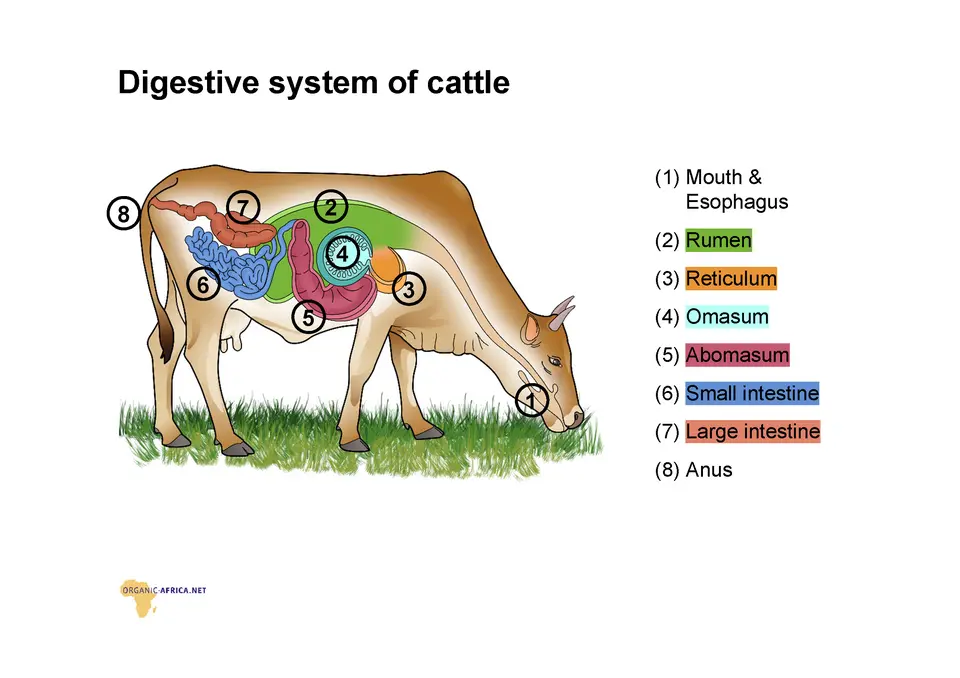
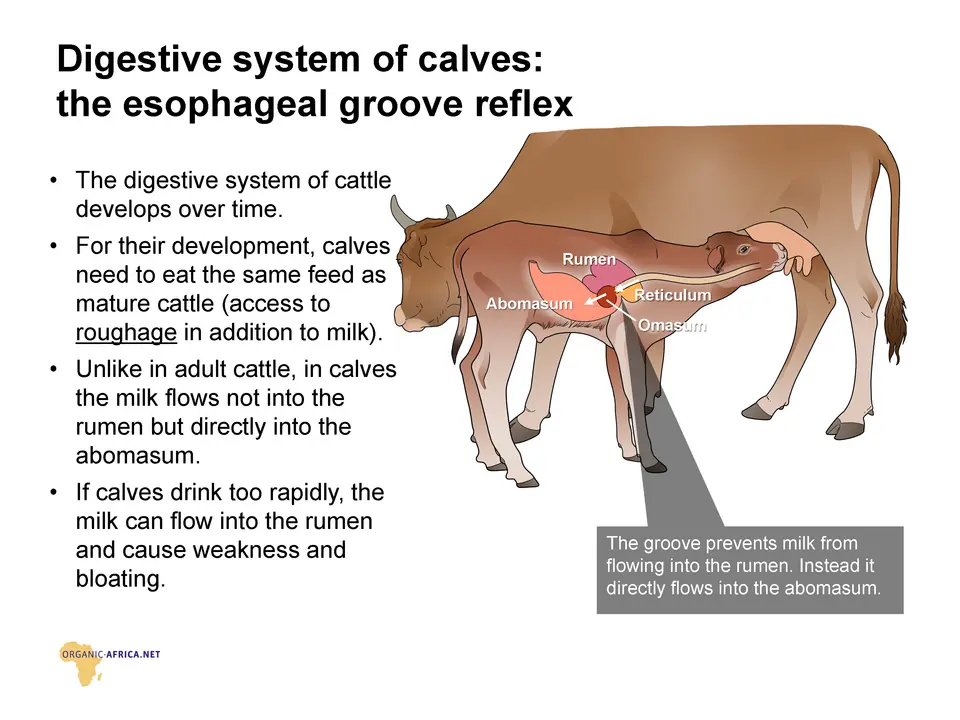
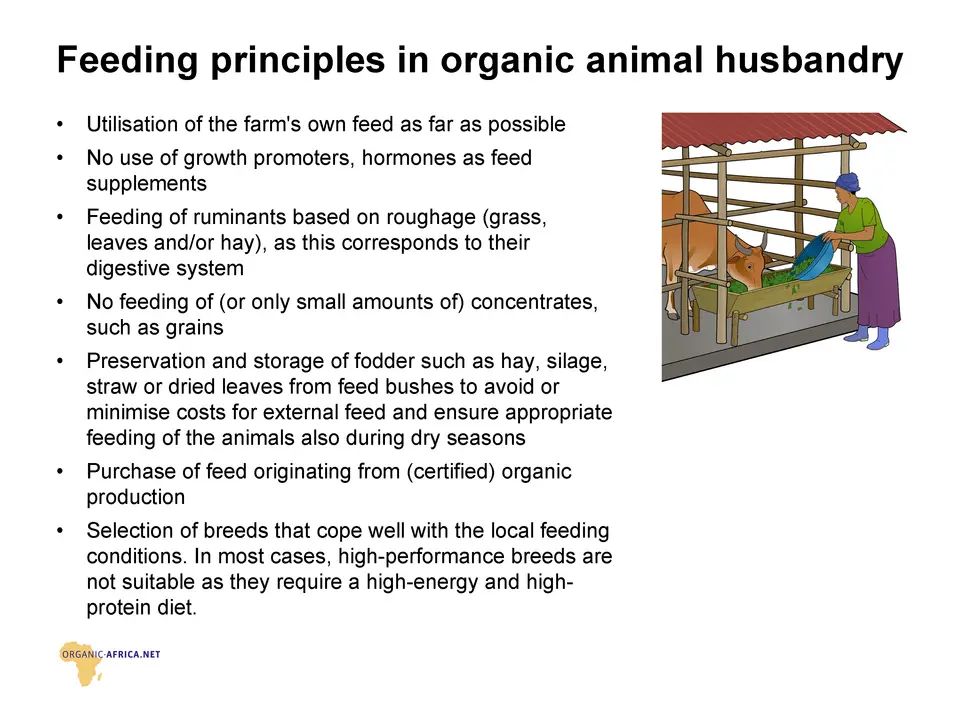
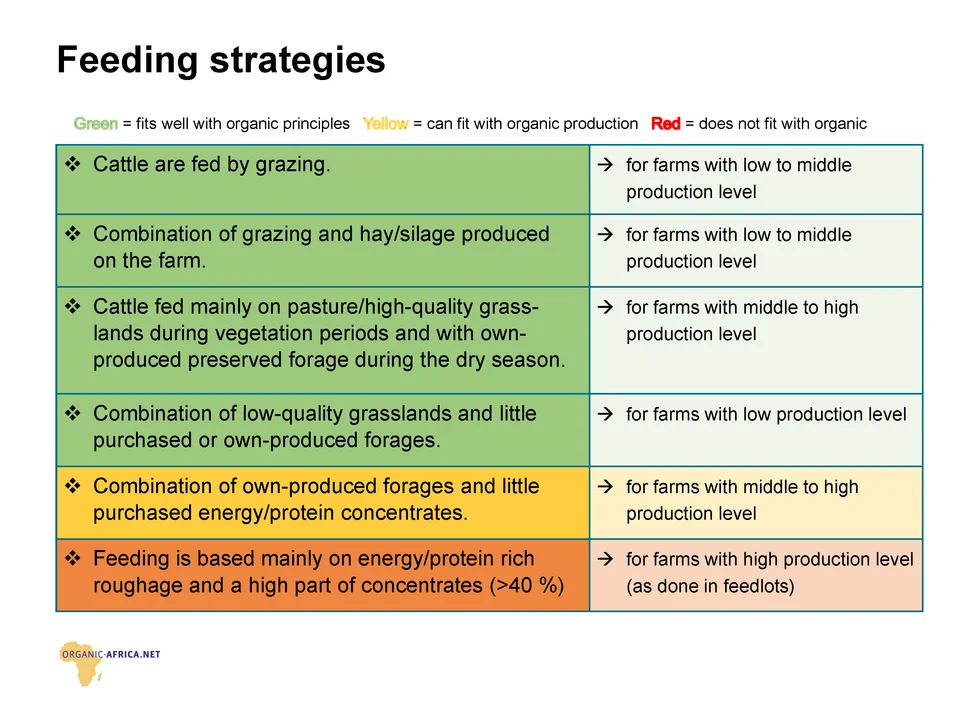
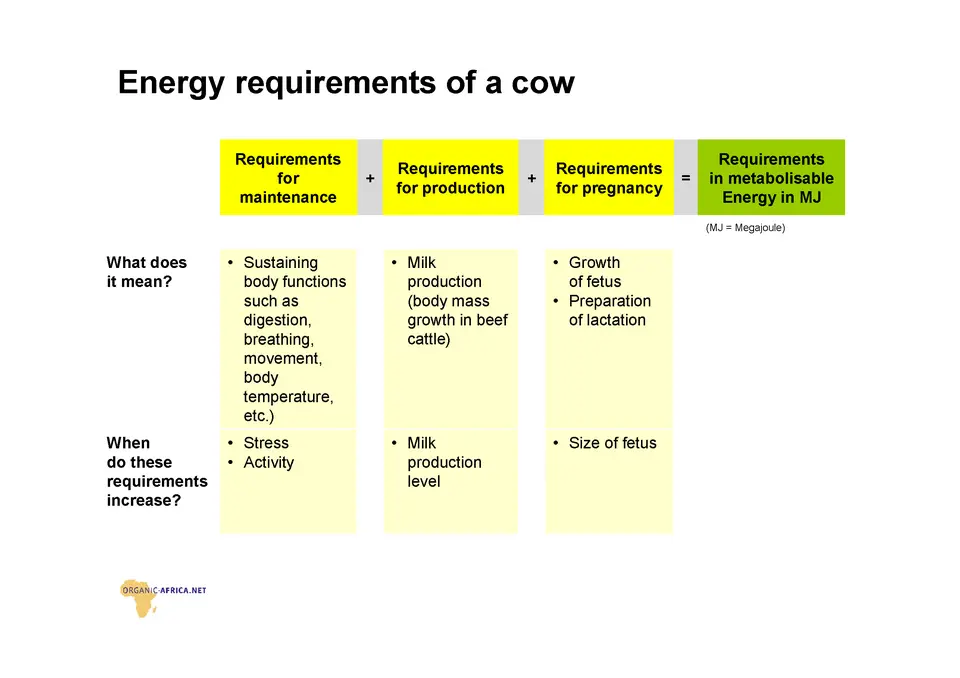
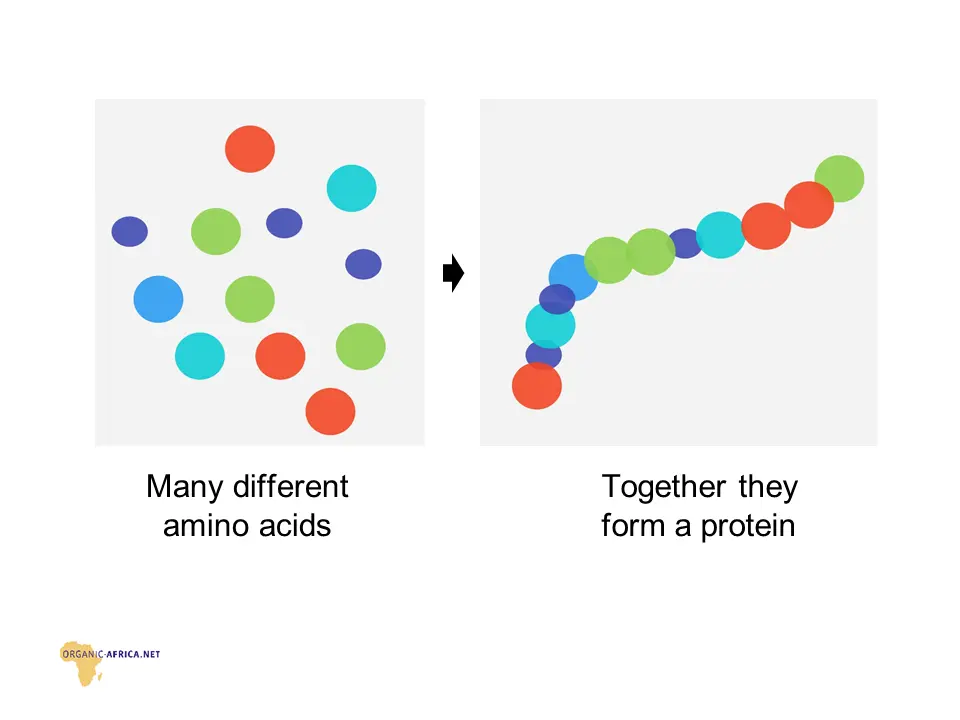
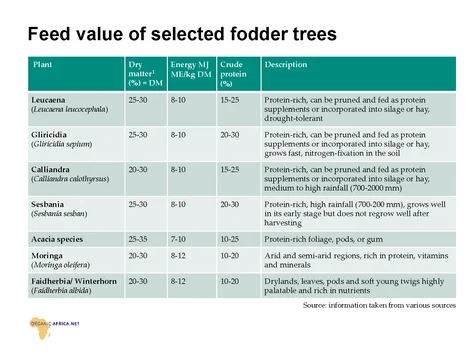
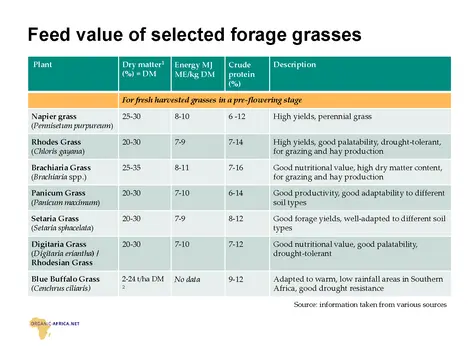
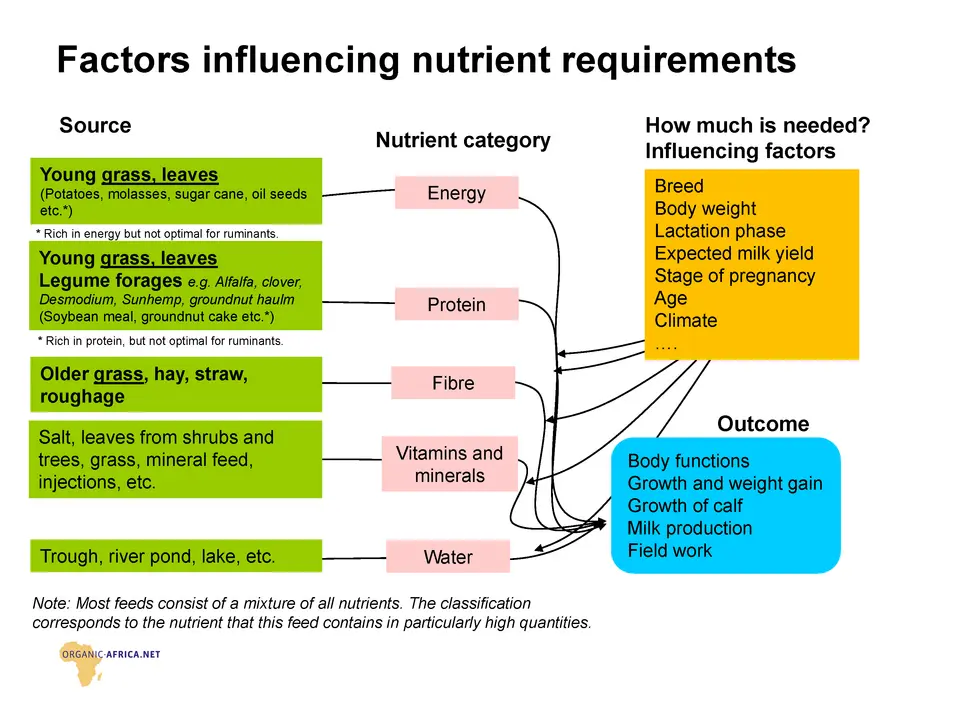
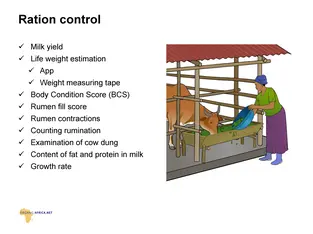
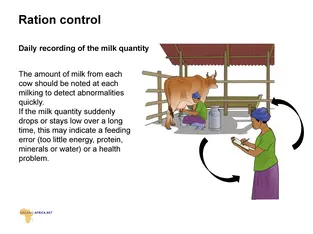
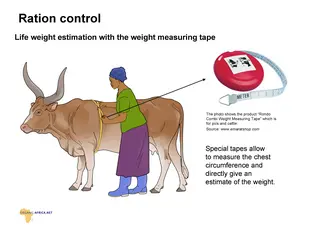
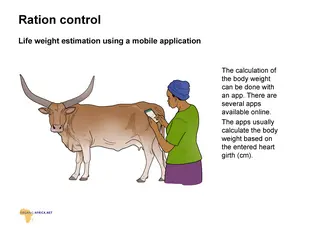
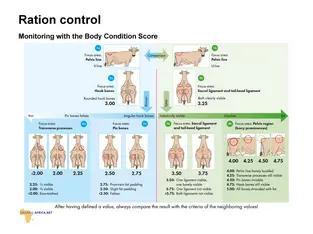
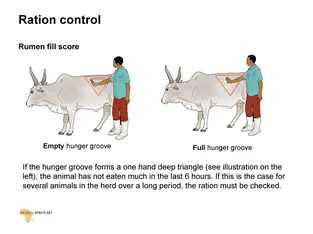
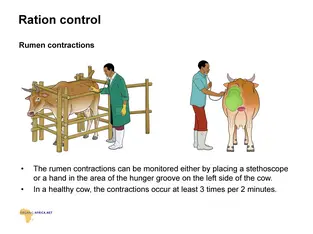
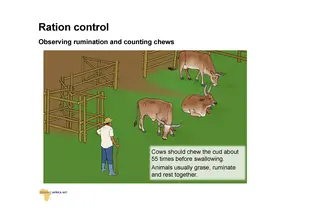
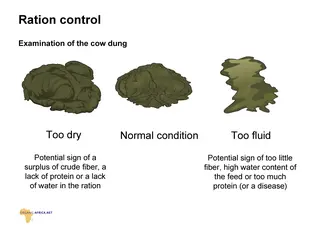
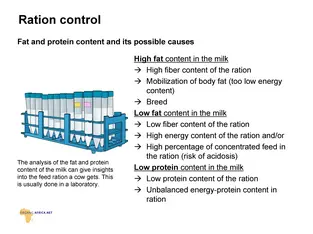
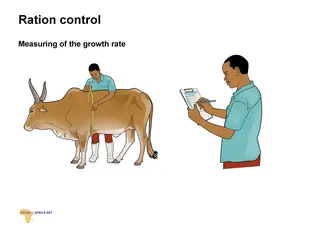
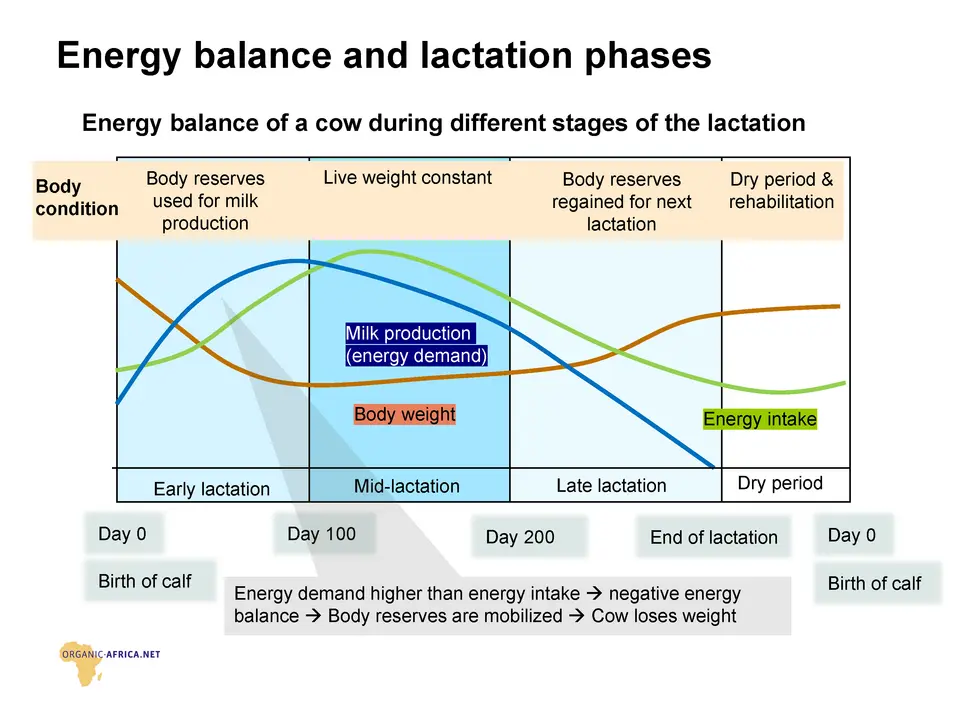
 tap and then scroll down to the Add to Home Screen command.
tap and then scroll down to the Add to Home Screen command.